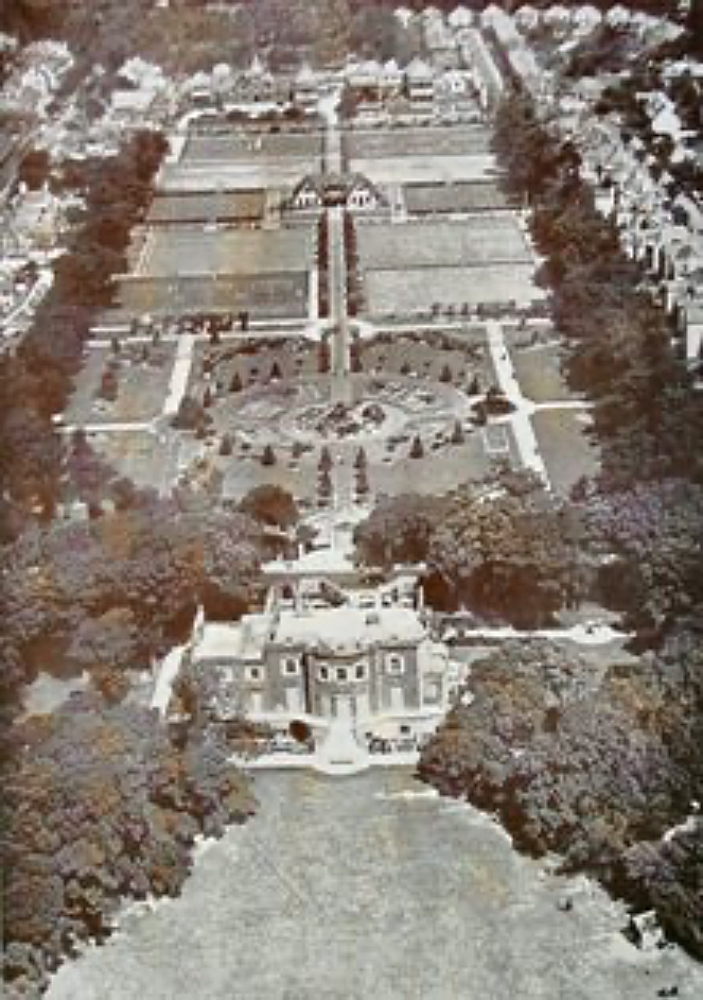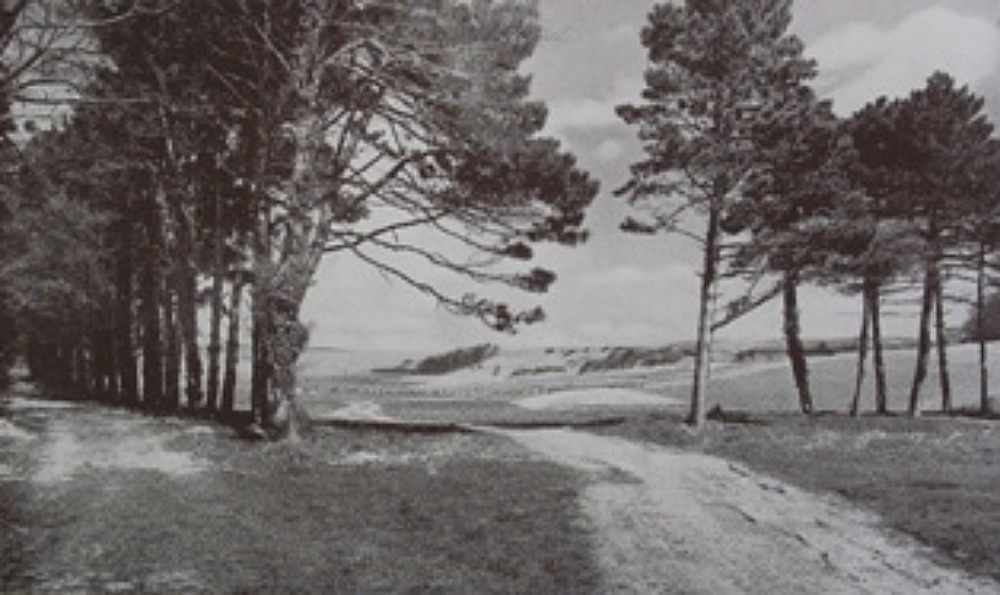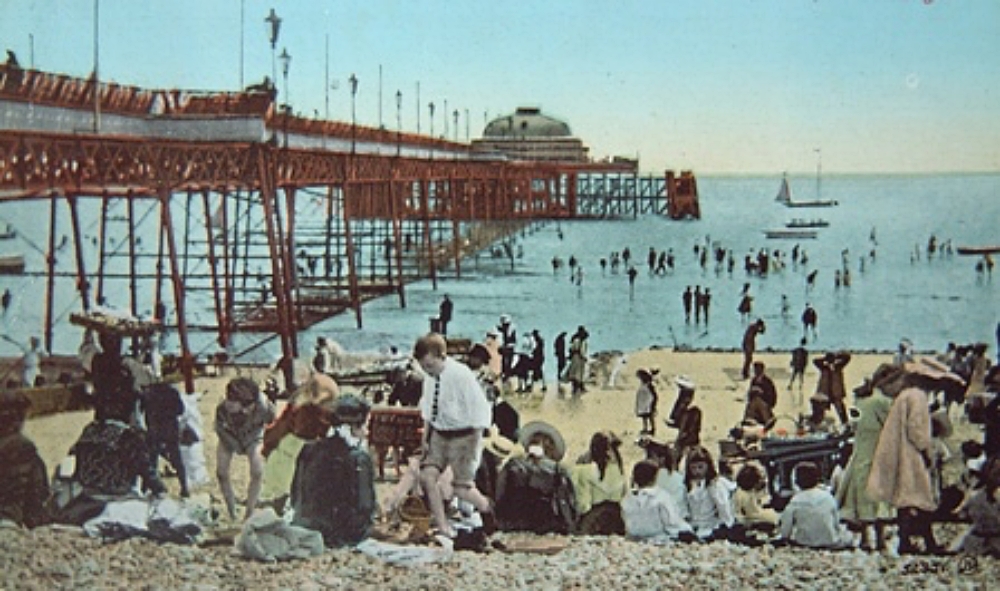Rapid expansion between World Wars
WORTHING grew rapidly in the 21 years between the two world wars and much of the development that would eventually earn it an enviable worldwide reputation as “such a green and pleasant town” took place during the peaceful years from 1918 to 1939.
Worthing Corporation acquired a remarkable portfolio of property during this period, including the Beach House mansion and surrounding estate, which only a few years earlier had been the favourite holiday residence of King Edward V11.
Within a decade the Corporation had successfully transformed this and other shrewd property purchases into popular amenities “designed to improve the health and occupy the leisure hours of all Worthing residents and visitors alike.”

IN 1922, when Worthing Corporation paid £11,000 for 10-acres of land on the north side of Beach House, it was just a large rough grazing field.
Within two years they had transformed it into Beach House Park, one of the town’s most attractive open leisure spaces still enjoyed by residents and visitors and incorporating world-class bowling greens, tennis courts, flower gardens and pavilion. Total cost to the Corporation was £38,000.
It was a bargain of which the Town Clerk of the time, John Kennedy Allerton, had every right to be proud. He had “steered” the deal to fruition at a bargain price – and it was only the first of many such acquisitions that were to change the public face of Worthing forever.
Between 1933 and 1939, to secure public open spaces, the Corporation purchased many acres of downland, mostly in Broadwater adjoining Cissbury Ring, the Worthing Golf Club’s two courses and land at High Salvington. Including these purchases, the Corporation secured for Worthing 1,000 acres of uninterrupted open countryside, affording unsurpassed views of the English Channel and a fine vista of West Sussex westwards towards Chichester.
At the time of the transaction the Town Clerk solemnly promised, “Most of it is land over which the public is free to roam at will and which will remain undeveloped for ever.
“It is a tremendous and valuable lung in view of the of the continuous encroachment of bricks and mortar on all parts of the south coast.”
Of course, that was over 70 years ago. How could he possibly have imagined the powers some future governments might take upon themselves to change such things.
The Corporation bought the Manor Sports Ground in Broadwater Road, in 1924. It was laid out in consultation with the Sussex County Cricket Club, though the Corporation had been warned that many more Worthing subscribing members of the County Club would be needed before County matches could be played in the town.
A special local appeal was held and it led to a substantial increase in the number of Worthing members. From then onwards, for many years, two first-class matches (mainly county championship games) were played at the ground each season.

In 1927, Worthing Rotary Club made a gift to the Corporation of the sports ground at Hill Barn Lane. Spread over eight-and-a-half acres, it provided much-needed playing pitches for local football and other clubs.
In 1919, the Wisden Trustees, owners of The Warren (which later became a private school for girls) and all the land up to and including Cissbury Ring and High Salvington Mill put the estate of 807 acres up for auction. The Corporation purchased lot three, which included Warren Farm buildings and 107 acres of land, for £4,000.
Prime reason for this acquisition was the protection of Broadwater waterworks and the object was successfully achieved. There was also a bonus – enough land for an 18-hole golf course that would take the name Hill Barn. This work was carried out in 1934-5 and the total cost was £17,000.
When Worthing Golf Club bought their two courses covering 600 acres, which they previously held on lease, their purchase included Cissbury Ring. But within a short time and largely aided by local subscription, ownership of the 80-acre Cissbury Ring was transferred to the National Trust for £2,000.
The town benefited from several gifts of land given by developers. For example, when the Charmandean estate was transformed into a residential area, the builders, Sandell & Sons, made a gift to the Corporation of five acres as a public open space.
In 1935, the Corporation added Church House Estate, Tarring, to their property portfolio and after erecting a block of flats on the northern frontage, laid out a public bowling green and tennis courts on what had previously been part of the gardens.
At a total cost of only £7,600 this acquisition not only provided what was generally regarded as “the most pleasantly situated bowling green in the town” but also proved to be a particularly shrewd financial deal.
It was an exceptional property transaction in 1927 that, arguably, had the widest of repercussions on Worthing’s seafront.
When wealthy Worthing property developer, Percy Brazier, successfully bid at auction for the Beach House mansion, in Brighton Road, Worthing, it came with a major expanse of surrounding ground right down to the sea..
For much of its existence the Loader family owned the mansion, following which it belonged to the American playwright, Edward Knoblock.
Full details of the negotiations that immediately followed Percy Brazier’s successful auction bid for the house and grounds have never been disclosed but we do know about the surprising outcome.
Instead of redeveloping the site in the way he originally planned – and thereby making his second fortune – Percy Brazier sold Beach House and all its grounds to the Town Council for precisely the £16,000 he had paid for it at the auction.
It became another highly beneficial property acquisition for the town, particularly as the Town Council was able use the site to build a boating pool, children’s paddling pool, the Aquarena indoor swimming pool, a pair of tennis courts and a children’s play area in the grounds, while keeping the handsome mansion itself intact!
